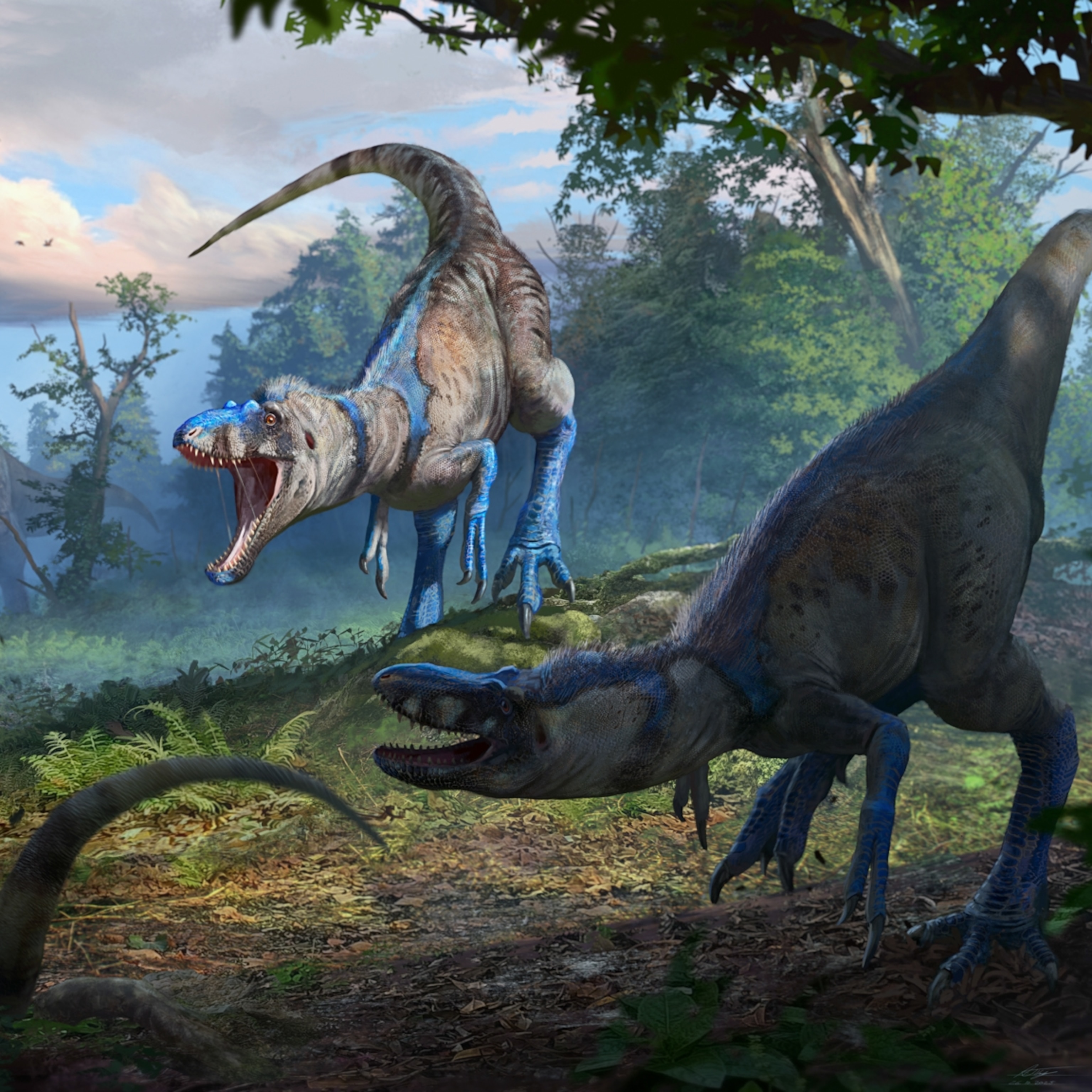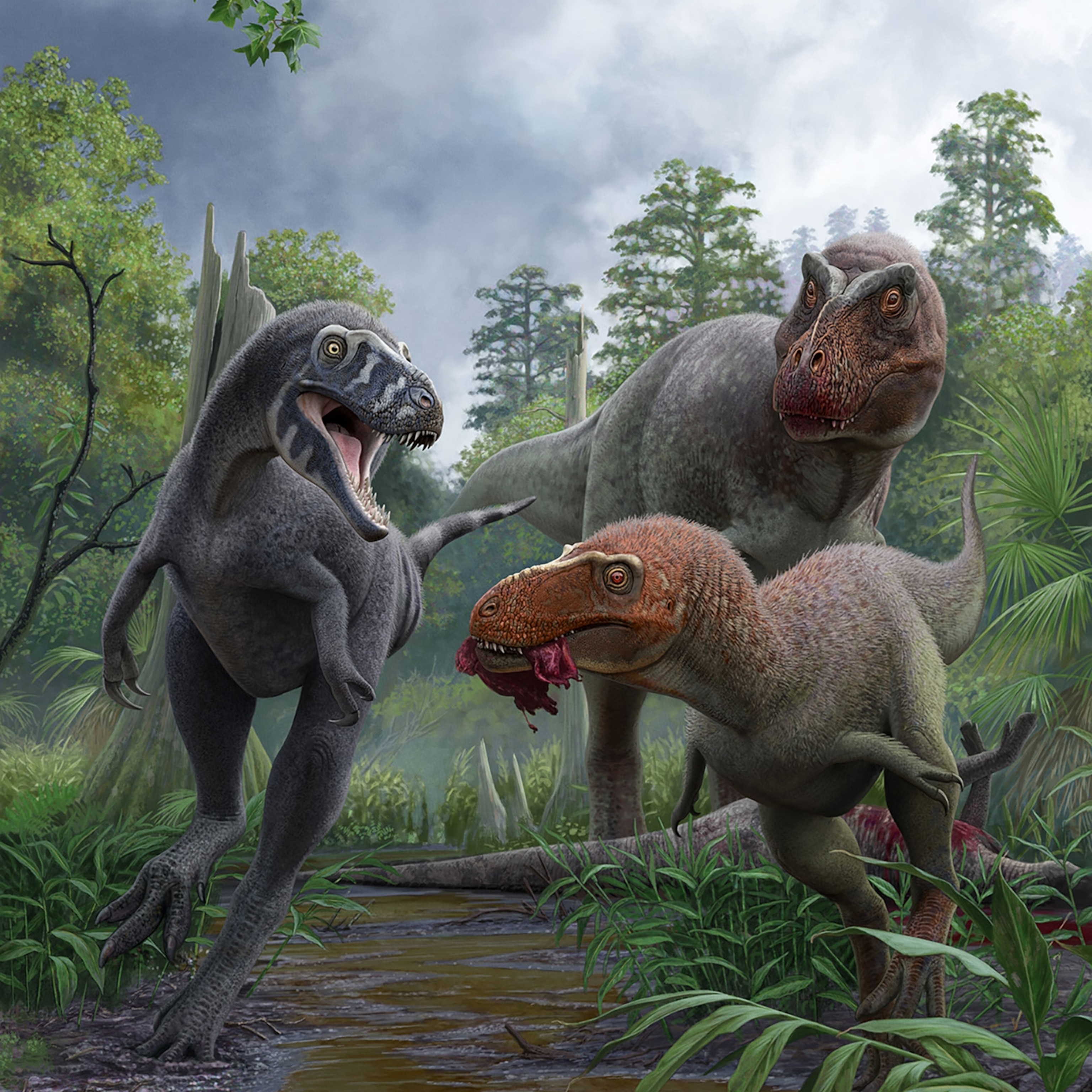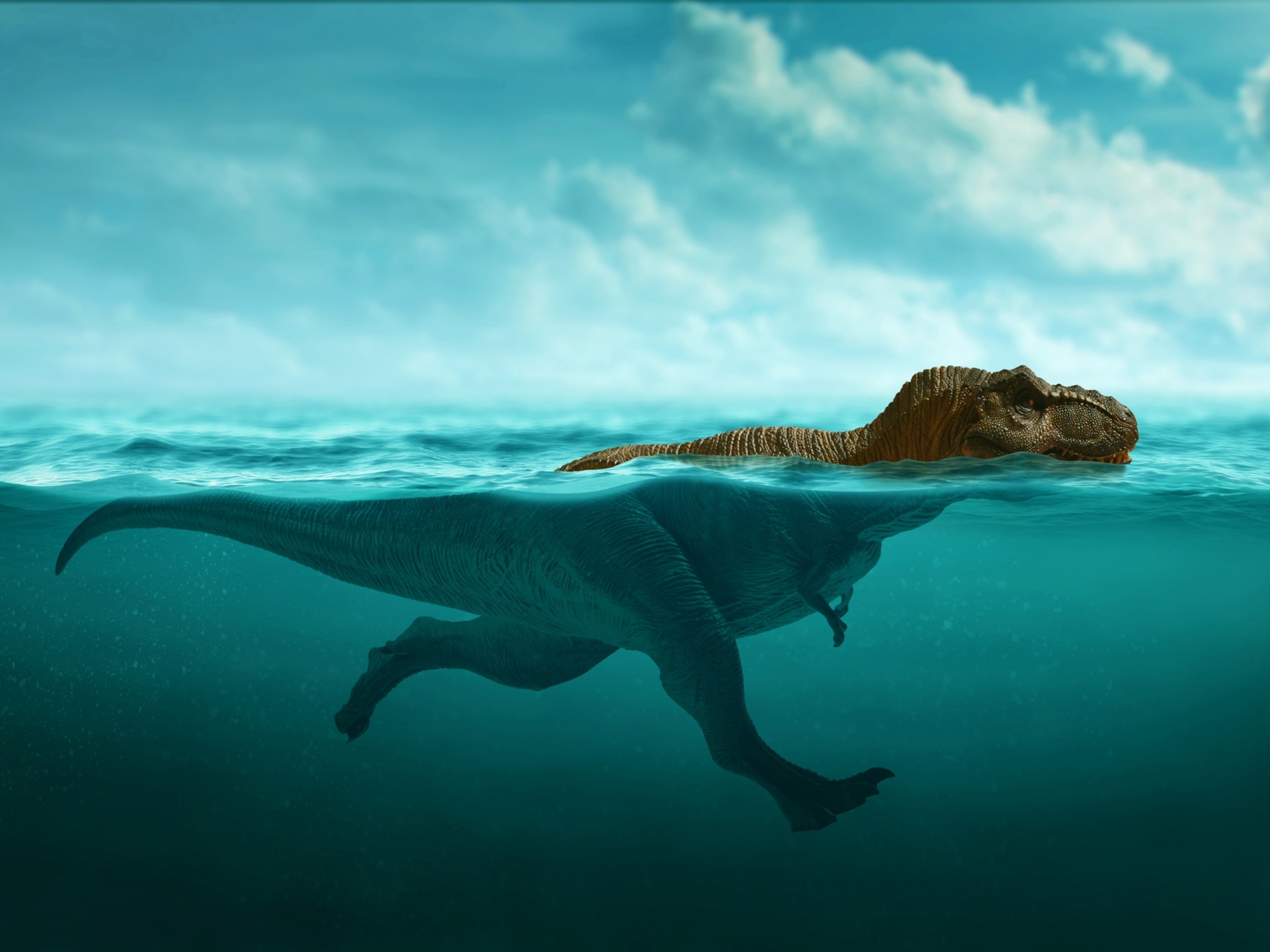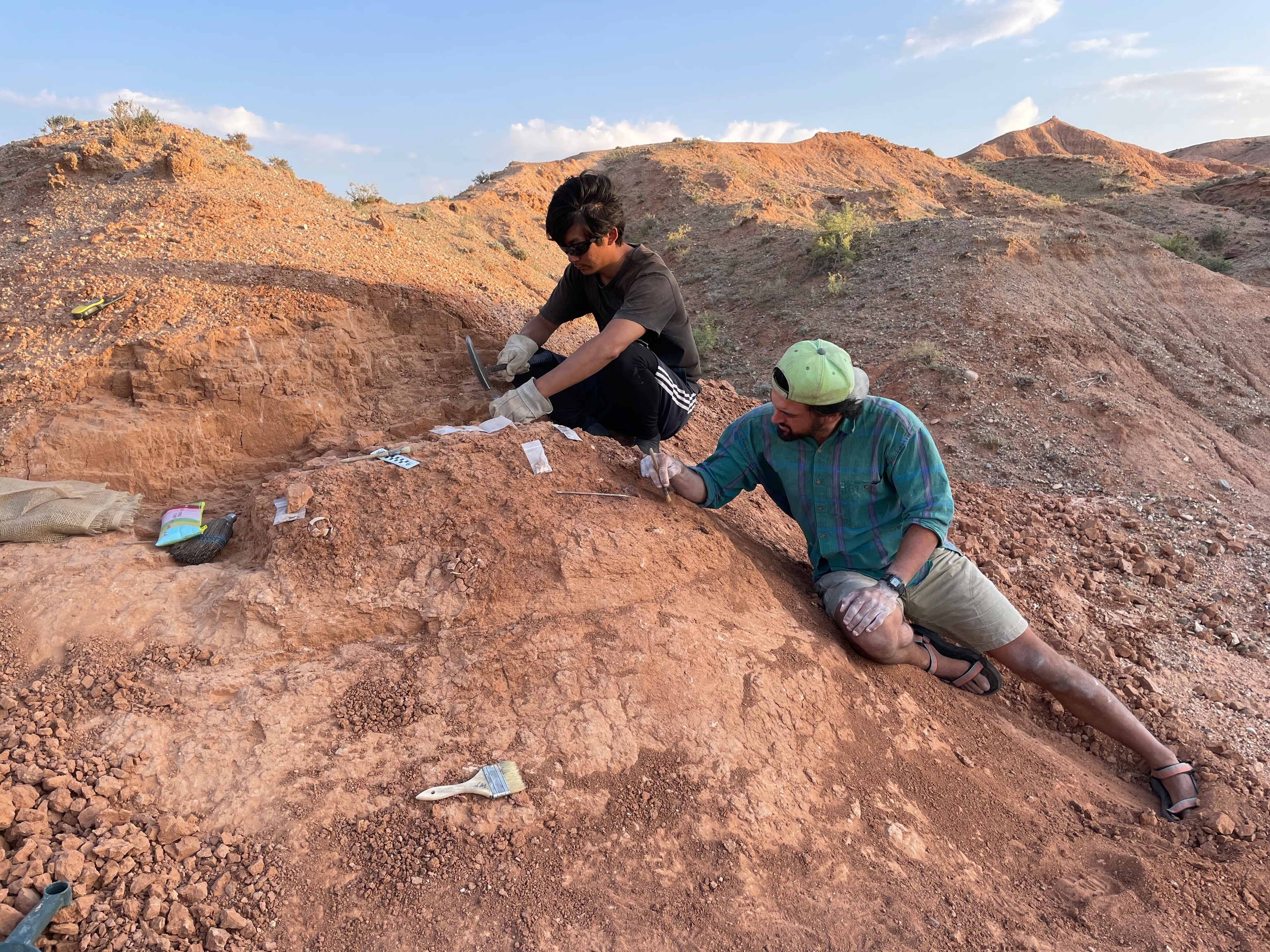With a name like paradoxus, you'd expect a little bit of weird from this tiny tyrannosaurid. First described in 2004, Dilong paradoxus took scientists by surprise with its downy coat. It was the first of its kind found to sport such proto-feathers, and it hinted that even the mighty Tyrannosaurus rex that followed some 50 million years later was not free of fuzz.
And Dilong isn’t done delighting researchers.
A recent study, published in Historical Biology, presents the first detailed analysis of Dilong's skull, which suggests the tiny tyrannosaurid's brain was S-shaped. This sinuous form differs from the linear brain of T. rex and is more commonly found higher up on the evolutionary tree.
“It's a paradox,” says lead author Martin Kundrát of the Pavol Jozef Šafárik University in Košice, Slovakia, echoing the sentiment responsible for the species' name.
What's more, the new analysis of Dilong—one of the oldest and smallest tyrannosaurids—is helping scientists understand how the family eventually came to rule the land. Tyrannosaur dominance wasn't a forgone conclusion.
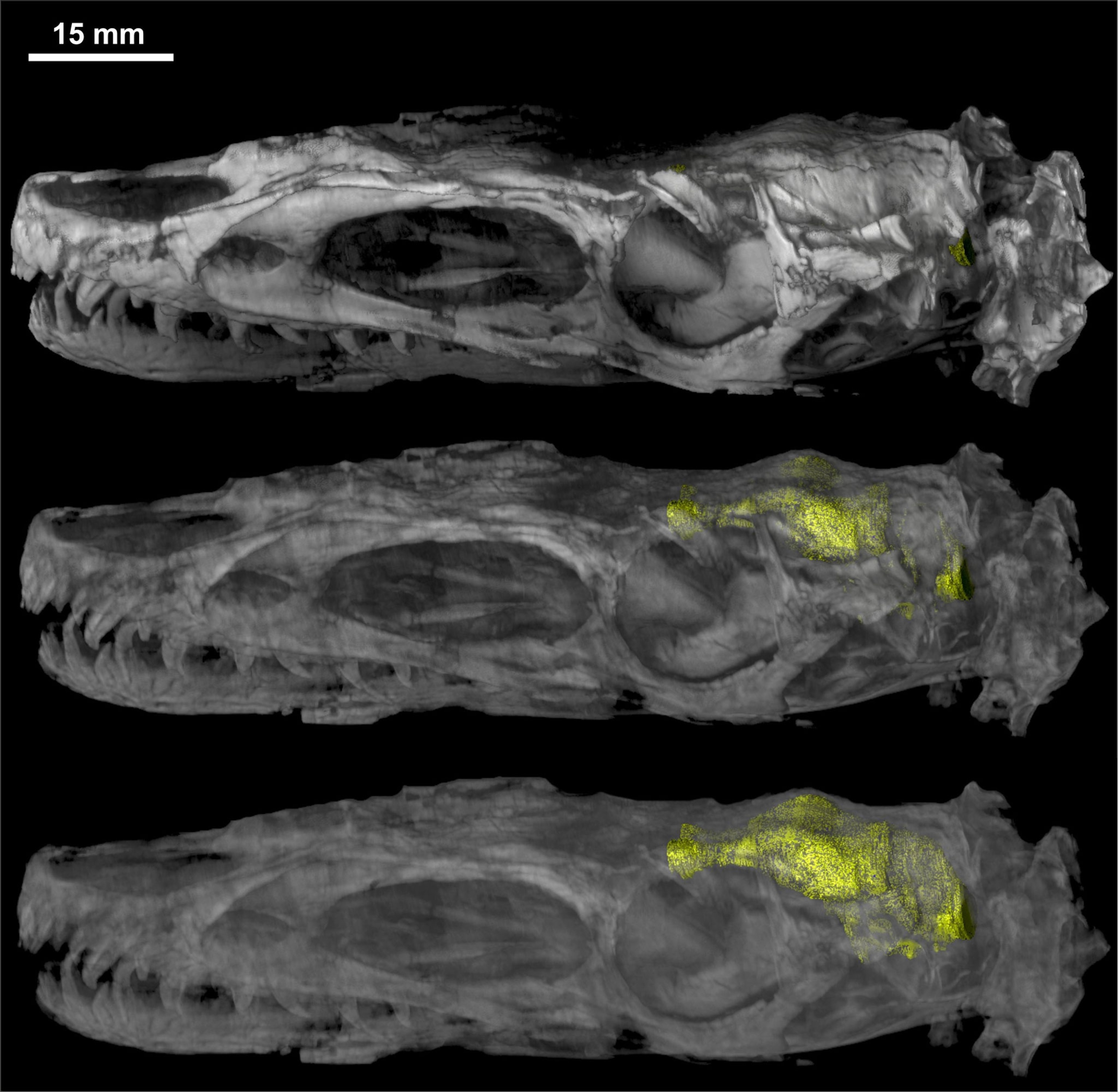
“There were a lot of big apex predators around when tyrannosaurs were first evolving,” says paleontologist Lindsay Zanno of the North Carolina Museum of Natural Sciences, who was not involved in the work. It wasn't until extinction events wiped out those competitors that the tyrants could take over.
The latest study suggests early tyrannosaurids’ brains—equipped with “sophisticated sensory toolkits”—could have played a big role in preparing tyrannosaurs for this uprising, Zanno says. “They were primed to become apex predators, but weren't really able to do that until the opportunity arose.”
Reading bones and brains
Just as behavioral secrets can be gleaned from the curves and proportions of dinosaur bones, the bumps and swollen lobes of their brains hold tales of ancient lifestyles. But there's a catch: Brains are soft and squishy, so they’re thought to be nearly impossible to fossilize. After death, the brain quickly rots, essentially puddling in the skull, says Eugenia Gold, a paleontologist at Suffolk University in Boston, who was not involved in the study. Just one fossilized dino brain has ever been reported—and even that claim is controversial among paleontologists.
The next best option for scientists to study ancient brains is to examine what's known as an endocast, or a mold of the brain case interior. That was the method used in the latest study; scientists took CT scans of a 125-million-year-old Dilong skull unearthed in western Liaoning, in northeast China. They virtually reconstructed the most likely shape of Dilong's brain and then compared their results to a previously scanned T. rex brain case.
The most obvious difference between the two brain reconstructions is the shape. Dilong's brain formed a squashed “S” while T. rex's brain was long and linear. The researchers expected just the opposite, Kundrát says, since S-shaped brains are more commonly associated with birds and advanced theropods, the two-legged dinosaurs that preceded our modern feathered friends. (Learn more about the dinosaurs that didn't die.)
That said, the extra curves certainly don't point to Dilong as the Einstein of tyrannosaurids; nor do they suggest T. rex was a dunce. The researchers suspect the change in shape is a consequence of the group's rapid growth.
Smell specialist
For the first 80 million years of their development, Tyrannosaurs were fairly small in size. Dilong, for one, measured a mere 6.6 feet long from tip to tail. But in a matter of only 15 million years or so, the beasts became super-sized. At its max growth rate, T. rex is estimated to have packed on 4.6 pounds a day.
“This had huge repercussions in their morphology,” says paleontologist Matteo Fabbri at Yale University, who was not involved in the work. “Until now, we didn't know how their nervous system was responding.” This latest work suggests this rapid growth not only affected how the creatures and their brains looked, but also their sensory capabilities.
For one, the olfactory region—the area of the brain responsible for the sense of smell—was proportionally larger in T. rex than it was in Dilong, hinting that the gigantic carnivores relied more heavily on scent to chase down dinner. Though both species were attuned to smells, Kundrát notes, T. rex was likely a “smell specialist.”
Dilong, in contrast, had a notably large flocculus, the part of the brain associated with the inner ear that contributes to agility and balance.
“I have never ever seen such a huge flocculus in any dinosaur that I've looked at or learned [about] from my other colleagues,” Kundrát says. This hefty flocculus likely assisted Dilong in keeping steady while glancing from side to side in pursuit of a meal. Since T. rex was big and bulky, it was likely far less mobile than Dilong and therefore didn't require such honed agility.
“This shows us what kind of animal the huge tyrannosaurs evolved from: small, brainy hunters that could hear well, but probably used speed and stealth more than a good sense of smell to locate prey,” paleontologist Stephen Brusatte of the University of Edinburgh in Scotland says via email. Brusatte and his colleagues similarly concluded brains came before brawn in a 2016 study of the skulls of slightly younger tyrannosaurids.
Tricks of the brain
Interpreting behavior from brain form is a tricky business, though.
“The brain is incredibly complex,” Gold explains. “If you don't really understand all the parts of it, you can make inferences, but you can't be 100-percent sure of what's going on.”
Because of this, there are many differences between the two brains that scientists are still unsure how to translate to behavior. For one, the cerebrum seems to have decreased in size between Dilong and T. rex. The cerebrum, along with the thalamus, is the part of the brain that's involved in “integration and higher level decision-making,” Gold explains. But she emphasizes that no one knows whether this shrinkage actually impeded function.
It's also still unknown how closely the brain case tracks brain shape, Zanno explains.
“How much space, for example, was there between the brain and the endocast?” These types of factors could influence how researchers interpret ancient behaviors from fossil remains.
Even so, paleontologists are reacting to this new research with excitement, and many emphasized its importance in understanding not only tyrannosaurid development but also changes observed in other dinosaurs. As Zanno explains, many of Tyrannosaurs' evolving features track what researchers have found for other ancient apex predators.
“Essentially,” she says, “it's just another example of how evolution keeps producing strategies that work.”


